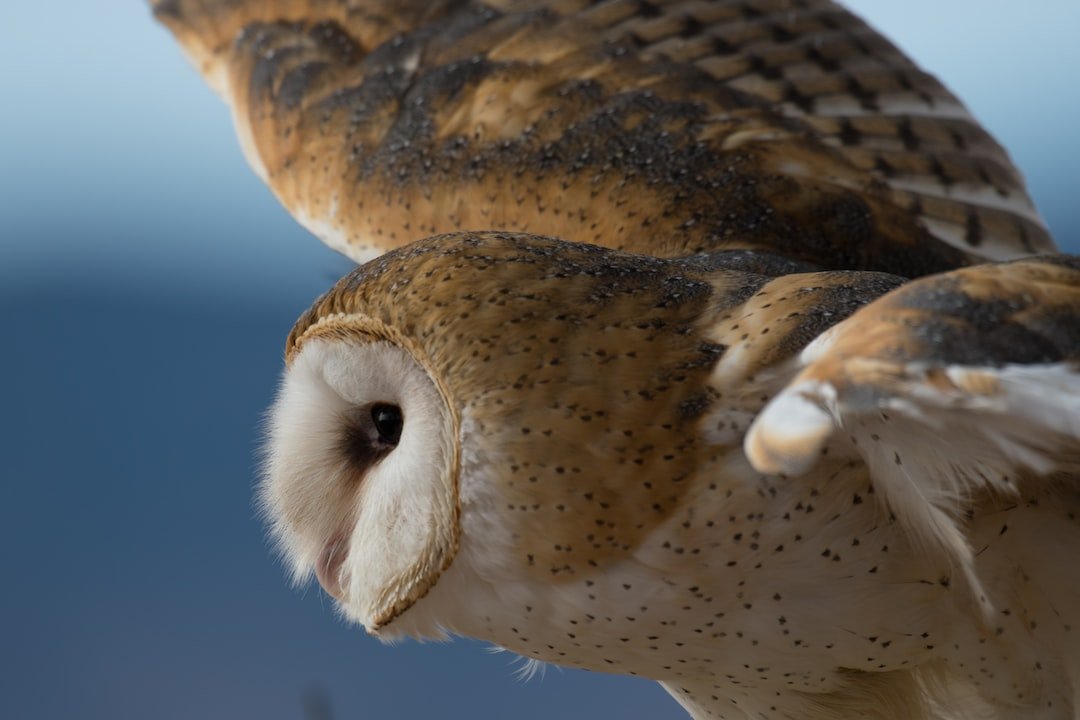Unveiling the Enigmatic Mating Systems of Owls: Monogamy versus Polygamy
Category : Owl breeding and nesting | Sub Category : Owl mating systems and monogamy versus polygamy Posted on 2023-07-07 21:24:53

Unveiling the Enigmatic Mating Systems of Owls: Monogamy versus Polygamy
Introduction:
The fascinating world of owls is often overshadowed by their appearance and nocturnal lifestyle. These majestic birds have intriguing mating systems that vary across species. We explored the contrasting dynamics of monogamy and polygamy in the owl mating systems concept.
A Bond That Endures is a Monogamy story.
Many owl species have monogamous mating systems. The barn owl is a popular example of a classic example. Barn owl pairs usually mate for life, and have a strong bond beyond the breeding season.
There are benefits to monogamy.
There are several advantages to monogamy for owl species. Stable pair bonds allow owls to share parental responsibilities equally, and provide better care for their offspring. The higher survival rate for their young ones is ensured by the cooperative effort of both parents.
There are challenges of monogamy.
Not all owl species have it easy. Conflicts between neighboring owl pairs can still occur because of competition for resources. If a monogamous owl's partner dies unexpectedly, they might face challenges in finding a new mate, which might result in a decrease in reproductive success.
Polygamy is a tale of multiple partners.
Some owl species engage in polygamous relationships. Polygamy is a more flexible approach to reproduction, as individuals have multiple mates during a single breeding season or over different years.
Polygamous species include the Great horned Owl. Male Great Horned Owls establish territories and attract multiple females to mate with, leading to a hierarchical system within their populations.
Polygamy has advantages.
Polygamous owl species can take advantage of the abundant resources available in their territories, reaping the benefits of multiple partners. This strategy allows them to maximize their reproductive output, produce more offspring and increase their genetic diversity.
There are challenges of polygamy.
Polygamy also has its share of challenges. Competition among male owls for territories and females is fierce. Some females might experience increased pressure in finding the right resources and food to support their young children.
Conclusions
The reproductive strategies employed by owls are revealed by the intricate mating systems. Polygamous owls maximize their reproductive success by using multiple partners. The unique ecological and evolutionary factors surrounding each owl species shape the advantages and challenges of both the mating systems.
Understanding the intricate ways in which owls mate offers a glimpse into the fascinating ways in which they navigate the delicate balance between romance, reproduction, and survival. If you spot an owl in a tree or gliding silently through the night, remember that there is more to their world than meets the eye.
Leave a Comment:
SEARCH
Recent News
- Zurich, Switzerland is not only known for its picturesque landscapes and vibrant culture but also for its diverse wildlife. While the city may be more commonly associated with its financial sector and luxury shopping, there are some rare and fascinating animals that call Zurich home.
- YouTube Content Creation: Showcasing Rare Animals through Translation
- If you are a nature enthusiast and love learning about rare and exotic animals, there are several YouTube channels dedicated to showcasing these fascinating creatures in their natural habitats. These channels provide a unique opportunity to educate yourself about lesser-known species and the importance of conservation efforts.
- The Importance of Developing Rare Skills Like a Rare Animal in the Workplace
- Women in Politics: Breaking Barriers and Making History
- Warsaw, the capital city of Poland, is not only known for its rich history and beautiful architecture but also for its unique and diverse wildlife. Despite being a bustling urban center, Warsaw is home to some rare and fascinating animals that can be found in various parks, forests, and reserves in and around the city.
- Vietnam is a country known for its rich culture, beautiful landscapes, and delicious cuisine. However, it is also home to a variety of rare and endangered animals that are found nowhere else in the world. In recent years, some Vietnamese businesses and companies have taken initiatives to help protect these precious species and their habitats.
- Vienna, the capital city of Austria, is known for its rich history, stunning architecture, and vibrant cultural scene. But did you know that Vienna is also home to a variety of rare and interesting animals? From exotic species at the Vienna Zoo to elusive wildlife in the surrounding countryside, there are plenty of fascinating creatures to discover in and around this beautiful city.
READ MORE
3 weeks ago Category : owlo

Zurich, Switzerland is not only known for its picturesque landscapes and vibrant culture but also for its diverse wildlife. While the city may be more commonly associated with its financial sector and luxury shopping, there are some rare and fascinating animals that call Zurich home.
Read More →3 weeks ago Category : owlo

YouTube Content Creation: Showcasing Rare Animals through Translation
Read More →3 weeks ago Category : owlo

If you are a nature enthusiast and love learning about rare and exotic animals, there are several YouTube channels dedicated to showcasing these fascinating creatures in their natural habitats. These channels provide a unique opportunity to educate yourself about lesser-known species and the importance of conservation efforts.
Read More →3 weeks ago Category : owlo
